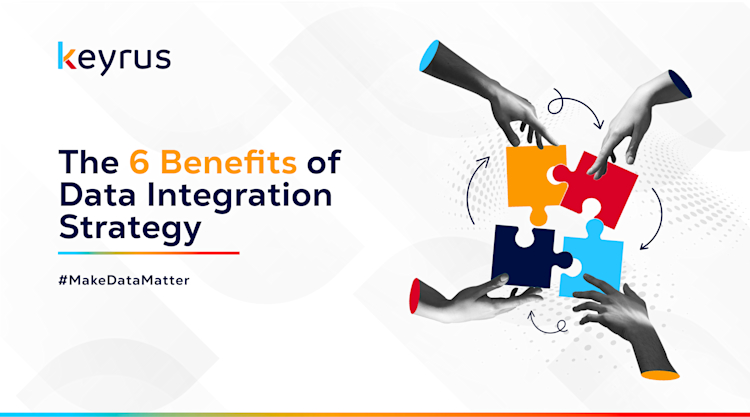In today's data-driven world, companies of all sizes and industries are constantly seeking ways to gain a competitive edge. One crucial strategy that can make a significant difference in achieving success is data integration. Whether you're a small startup or a large enterprise, ensuring that your data is well-organized and of high quality is paramount. In this article, we'll delve into the myriad advantages of data integration for organizations, from making more informed decisions to maximizing the potential of your data and boosting competitiveness. Curious to learn more? Let's dive in!
1. Making Informed Decisions
Data integration provides a comprehensive and accurate view of your data, enabling you to make decisions based on evidence rather than intuition. By giving users access to integrated data within the applications and services they regularly use, it empowers them to optimize their decision-making processes. Integrating data into relevant systems makes information actionable in day-to-day operations, equipping users with the insights they need to work smarter.
2. Easing the Burden on Business Analysts
Business intelligence professionals often grapple with the daunting task of sifting through vast volumes of data generated by companies daily. Breaking down data silos allows users to access information independently and self-sufficiently. Providing direct access to relevant information saves analysts from headaches, allowing them to focus on more complex datasets that truly add value to the business.
3. Operational Efficiency and Enhanced Productivity
Have you ever spent considerable time conducting an analysis, only to discover that a similar project was completed months ago in another department? Common organizational challenges involve locating customer data across multiple sources, documenting processes in various systems, and more. Data integration fosters collaboration and data sharing across departments, eliminating duplication of efforts and streamlining processes by providing quick and easy access to essential data. This significantly improves operational efficiency and employee productivity.
4. Maximizing Data Potential
This point is closely related to the previous one. A report that's effective for thirty employees won't hold the same value if only five of them receive it. Thanks to data unification, organizations can harness information from different sources collectively, maximizing its value and ensuring all teams have what they need. The integration of data also simplifies the identification of patterns, trends, and business opportunities that can shape your company's strategy.
5. Data Utilization at Its Best
Data from Excel spreadsheets, structured databases, social media reports, market trends, technical documents, and countless other sources make more sense when unified and visualized together. This maximizes their value, integrity, and quality by merging them. Simultaneously, this data integration makes it easier to identify patterns, trends, and business opportunities that can be game-changers for your overall business strategy.
6. Enhancing Competitiveness
Undoubtedly, data integration enables organizations to adapt quickly to market changes and make more agile decisions, placing them in a more competitive position. In a world driven by data, it's not just a trend; it's a necessity. It paves the way for smarter decision-making, operational efficiency, and sustainable competitiveness.
The next time you find yourself contemplating the relevance of data integration for your business, rest assured, the answer resounds with absolute certainty: it's not just a trend; it's an absolute necessity. In our data-centric world, data integration paves the way for astute decision-making, heightened operational efficiency, and enduring competitiveness. As you've witnessed throughout this article, the advantages it bestows are unequivocal, making it an indispensable catalyst for business triumph. If you're ready to harness these game-changing benefits, don't hesitate to reach out to our experts today. Let us guide you towards a future of data-driven prosperity.
